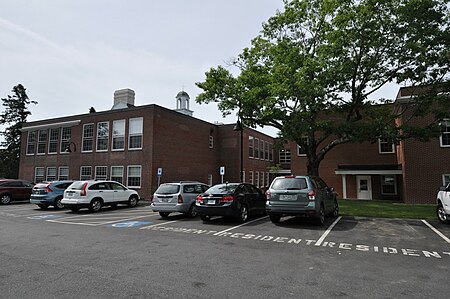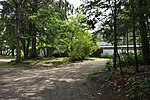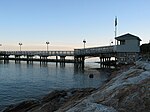Plummer-Motz School
Buildings and structures in Falmouth, MaineNational Register of Historic Places in Cumberland County, MaineSchool buildings completed in 1931School buildings on the National Register of Historic Places in Maine

The Plummer-Motz School, formerly Falmouth High School, is a former school building at 192 Middle Road in Falmouth, Maine. Built in the 1930s, it was the town's first high school, serving as first a high school, and later as a junior high school and elementary school, until its closure in 2011. The building has been converted to residential use.
Excerpt from the Wikipedia article Plummer-Motz School (License: CC BY-SA 3.0, Authors, Images).Plummer-Motz School
Middle Road,
Geographical coordinates (GPS) Address Nearby Places Show on map
Geographical coordinates (GPS)
| Latitude | Longitude |
|---|---|
| N 43.723888888889 ° | E -70.245 ° |
Address
Middle Road 189
04105
Maine, United States
Open on Google Maps









